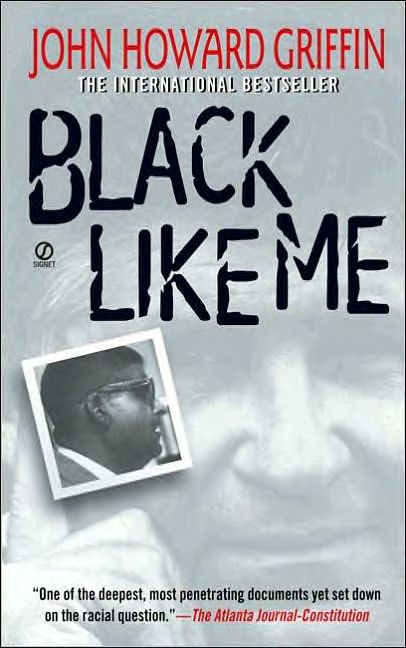01 Feb / Black Like Me by John Howard Griffin

 Today begins Black History Month … a month devoted every year to the African American experience. In case you’re wondering, historian Carter G. Woodson, considered the “Father of Black History,” pioneered the concept of “Negro History Week” in 1926, which fell in the second week of February to celebrate the birthdays of two pivotal figures in African American history, Abraham Lincoln (12th) and Frederick Douglass (14th). Fifty years later, in 1976, that week became a whole month in the U.S., renamed Black History Month. In 1995, our northern neighbors also followed suit and officially recognized February as Black History Month. And, across the Pond, our British brethren have officially designated October for Black History Month commemorations.
Today begins Black History Month … a month devoted every year to the African American experience. In case you’re wondering, historian Carter G. Woodson, considered the “Father of Black History,” pioneered the concept of “Negro History Week” in 1926, which fell in the second week of February to celebrate the birthdays of two pivotal figures in African American history, Abraham Lincoln (12th) and Frederick Douglass (14th). Fifty years later, in 1976, that week became a whole month in the U.S., renamed Black History Month. In 1995, our northern neighbors also followed suit and officially recognized February as Black History Month. And, across the Pond, our British brethren have officially designated October for Black History Month commemorations.
So … back to books … if you read ONE book this month, let it be Black Like Me. Ironically, it’s written by a white man, I realize … but truly, this half-century old, eye-opening, gut-wrenching treatise on the African American experience still has the power to shock and inspire you.
In late October 1959, Texas journalist John Howard Griffin – a self-described “specialist in race issues [who] really knew nothing of the Negro’s real problems” – decided to become “a Negro in the Deep South.” With the help of a reluctant dermatologist, he literally transformed himself into a dark-skinned person and ‘passed’ as a black man through the deep American South.
He kept a detailed diary of his experiences, and his story became nightmarish classic legend, splashed all over the newspapers, magazines, and television by the end of his experiment. Black Like Me quickly became an international bestseller and has never been out of print since its 1961 debut. His epilogue, added in 1975, gives a chilling account of the dangerous hostility he and his family survived after his experiences became public.
While I have read excerpts at various points during my education, I had never read the book in entirety until recently. I couldn’t put it down. I can’t recommend it adamantly, absolutely enough.
“The Negro. The South. These are details. The real story is the universal one of men who destroy the souls and bodies of other men (and in the process destroy themselves) for reasons neither really understands,” Griffin writes in his preface. “It is the story of the persecuted, the defrauded, the feared and detested.” You do not want to believe Griffin’s experiences – solely because of the transformation of his skin color. Your mind can’t fathom how human beings can treat other human beings with that level of disregard, disrespect, and just downright evil.
Most disturbing of all, you can’t believe how familiar Griffin’s experiences still are today. As our too-wise young daughter said two years ago after learning about the Ku Klux Klan, lynchings, and segregation during a difficult school year, ” … but Mommy, things still haven’t changed enough … James Byrd’s murder was during my lifetime.” Out of the mouth of tween-aged babes …
Read. Learn. Rage. Then do your best – small, medium, major ways, anything you can do – and change the world for the better.
Readers: Young Adult, Adult
Published: 1961, 1996 (35th anniversary edition with Griffin’s epilogue and an afterword by Robert Bonazzi)
